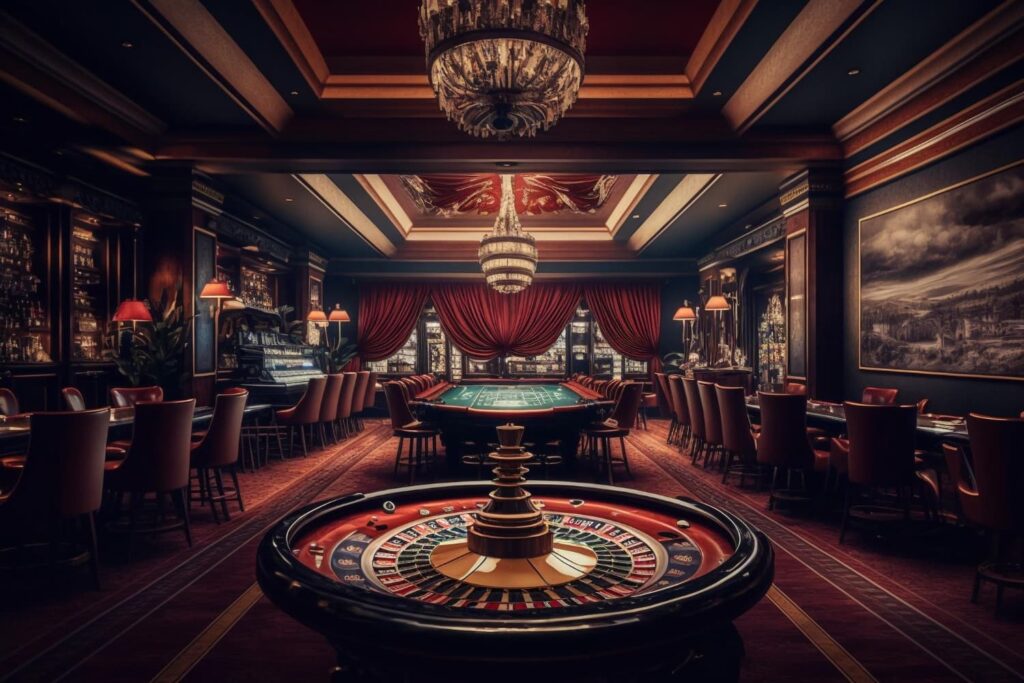In what way Casino Games Utilize Shade and Style to Draw Players

In the dynamic and exciting world of casinos, wherein fortune and tactics intertwine, color and design play a pivotal role in drawing in gamblers. From the moment visitors step into a casino or log into a gaming platform, they are immersed in a sightly feast that captures their attention and entices them to discover more. Vivid colors, engaging graphics, and creative layouts are carefully crafted to create an environment of excitement and anticipation, ultimately enhancing the gaming encounter.
While players move through the dynamic landscape of casino games, they come across a range of designs that not only serve visual purposes but also affect feelings and decision-making. Colors like red and gold symbolize riches and fortune, while soothing blues and greens can create a much relaxed environment. Understanding how these elements function together enables casinos to create an welcoming and energizing atmosphere that encourages players to interact with the games, invest more time at the tables, and boost their overall enjoyment.
The Psychology of Color in Casino Games
Color plays a critical role in the development of gaming experiences, shaping players’ feelings and actions. Vivid and striking shades, such as crimson and yellow, are often used to stimulate excitement and attract attention. These shades create a sense urgency and dynamism, encouraging participants to engage more enthusiastically with the experience. By thoughtfully selecting hues, creators aim to inspire feelings of joy and anticipation, which can enhance the overall gaming experience.
Distinct colors also have psychological connotations that can affect how participants perceive their chances of success. For instance, green is frequently associated with luck and wealth, making it a well-liked choice in games like roulette and poker tables. This link can lead participants to feel more positive and assured in their play, ultimately motivating them to stake more. Understanding these associations allows game creators to craft environments that enhance player satisfaction and loyalty.
Moreover, the interface of casino game interfaces often utilizes blended colors and opposing shades to guide players’ actions. For example, winning outcomes may be highlighted with striking, contrasting shades, creating a visual incentive. This approach reinforces favorable outcomes and promotes repeated engagement. https://bj88a.info/ By utilizing color psychology, gambling establishments can design activities that not only captivate participants but also maintain them interested and committed in their game experience.
Design Features that Attract Players
The aesthetic appeal of gambling games is largely influenced by the use of vibrant colors. Lively and striking colors are deliberately chosen to create an appealing atmosphere that grabs attention. For instance, crimson and golds often signify good fortune and prosperity, which is why they are common in the color schemes of slot machines and table surfaces. These colors not only attract players in, but they also stir emotions related to thrill and anticipation, enhancing the overall gaming experience.
In parallel to color, the design and layout of casino games play a significant role in player attraction. Games are designed to be user-friendly, ensuring that players can quickly understand the guidelines and mechanics. User-friendly interfaces, along with captivating graphics and animations, help maintain gamer interest and promote extended play sessions. The physical elements, such as the texture of the buttons and the audio of the games, also contribute to a comprehensive sensory experience that keeps players immersed.
In conclusion, thematic elements in gaming design can significantly influence player choice. Many gambling games are inspired by media, fairy tales, or adventure themes, featuring symbols and characters that resonate with players. These themes create a sense of immersion and relatability, making each game feel unique. When players feel a bond to the theme, they are more likely to opt for that game over others, leading to increased participation and enthusiasm within the casino environment.
Case Studies: Notable Gambling Table Game Designs
One key example of effective gambling game design is the acclaimed slot machine series themed around hit movies. Games such as those based on the The Wizard of Oz and Game of thrones utilize bright colors and superior graphics to immerse players in recognizable narratives. The application of lively visuals and entertaining sound effects grabs the attention of players, establishing an emotional connection to the theme. This tactic not just promotes longer play but also boosts the overall gaming experience, yielding increased player retention.
Another effective case is the application of color in table games like blackjack and the wheel. Casinos often design these games with deep reds and greens, colors traditionally associated with luck and wealth. For instance, the emerald felt on a blackjack table provides a relaxing effect, while the crimson accents in roulette invite excitement. This intentional use of color helps to create an inviting atmosphere that stimulates players to join in, satisfying their psychological impulses and increasing their enjoyment.
Finally, social casino games that feature community features and bright, dynamic designs have experienced remarkable success in engaging players. Games like Zynga Poker and Slot-O-Mania leverage vivid colors and playful animations to create an inviting online environment. Bj88 The inclusion of leaderboards, community sharing options, and in-game rewards promotes competition and community, pulling players in for longer sessions. Such designs not just make the games visually attractive but also emphasize community engagement, a crucial factor in player retention and engagement within digital casino environments.